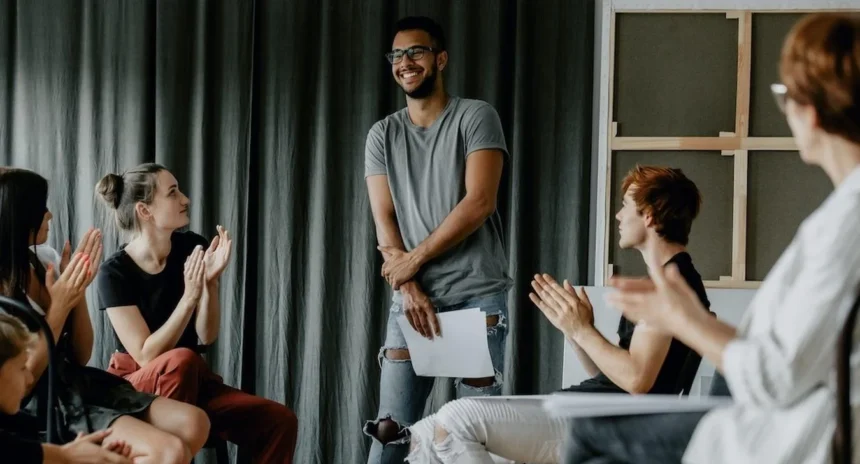Introduction to Back Casting
Imagine standing at the edge of a vast landscape, gazing not just at what is ahead but reflecting on how you got here. This moment is where back casting comes into play—a powerful technique that allows individuals and organizations to envision their future by analyzing the past. It’s like reverse engineering your dreams.
The concept has gained traction in various fields, from strategic planning to personal development. But how do you navigate this process effectively? Enter the Back Casting Room—a space for creativity and innovation, where ideas are nurtured through unique techniques designed to foster clarity and insight.
Ready to explore eight creative techniques that will transform your approach to back casting? Dive in as we unveil tools that can help shape your vision with purpose and precision.
Understanding the Concept of Back Casting Room
The concept of a back casting room may sound intriguing, but its essence lies in envisioning the future from a present standpoint. It involves stepping back to explore how we can achieve desired outcomes by examining the pathways that lead there.
In this innovative space, participants engage with various techniques aimed at unraveling potential futures. The focus shifts from traditional forecasting methods to intentionally reversing the thought process.
Instead of predicting what will happen next, you reflect on where you want to be and trace backward through time. This unique approach fosters creativity and empowers teams to think outside conventional boundaries.
Harnessing the power of imagination is key here; it’s all about visualizing possibilities while grounding ideas in reality. Each session within a back casting room opens up new dimensions for exploration and planning, reshaping how organizations strategize for success.
Technique 1: Mind Mapping
Mind mapping is a powerful technique that can help you visualize your ideas and concepts. By creating a diagram, you connect thoughts in an organized manner. This allows for clarity and creativity to flow effortlessly.
Start with a central theme or goal placed in the middle of your map. Branch out by adding related ideas as extensions. Each branch represents different aspects, making complex information more digestible.
Color-coding can enhance your mind map further. It not only adds visual appeal but also helps differentiate themes at a glance.
Utilizing images and symbols will spark inspiration too, encouraging deeper engagement with your subject matter. Mind maps serve as dynamic tools for brainstorming within the back casting room context, allowing collaborators to harness collective insights effectively while steering toward their desired future outcomes.
Technique 2: Role Playing
Role playing is a dynamic technique that immerses participants in different perspectives. By stepping into various roles, individuals can explore scenarios from multiple angles. This fosters empathy and deeper understanding.
Imagine a team tasked with developing a new product. One person could embody the end-user while another takes on the role of an investor. Through this exercise, they gain insights into needs and expectations that might otherwise go unnoticed.
The beauty of role playing lies in its interactivity. It transforms theoretical discussions into tangible experiences. Participants react to each other’s inputs, sparking spontaneous ideas and solutions.
This method also encourages creativity by breaking down barriers between team members. The playful atmosphere allows for more open communication and collaboration, leading to richer outcomes in the back casting room process. It’s not just about acting; it’s about discovering hidden opportunities through human connection.
Technique 3: Scenario Analysis
Scenario analysis is a powerful tool within the back casting room framework. It allows teams to explore various plausible futures by considering different variables and uncertainties.
By crafting distinct scenarios, participants can visualize how specific decisions might play out over time. This forward-thinking approach enhances strategic planning.
Imagine detailing both optimistic and pessimistic outcomes. Each scenario challenges assumptions while revealing potential pitfalls or opportunities that may arise along the way.
The beauty of this technique lies in its flexibility. Teams can adjust parameters based on external factors like market trends or technological advancements, ensuring relevance and applicability.
Moreover, collaborative discussions around these scenarios foster creativity and innovation. Diverse perspectives come together to shape a more comprehensive understanding of future possibilities, making it easier to identify actionable paths toward desired goals.
Technique 4: Reverse Brainstorming
Reverse brainstorming flips traditional brainstorming on its head. Instead of asking how to solve a problem, participants consider how to make it worse. This approach can lead to unexpected insights that highlight potential pitfalls.
Imagine a team working on a new product launch. Instead of thinking about what features will appeal to customers, they brainstorm ways the product could fail spectacularly. This creative exploration unearths hidden flaws and weak points in the original plan.
The key lies in embracing wild ideas without judgment during this process. By focusing on negative outcomes, teams often identify critical issues they might otherwise overlook.
After generating these “bad” ideas, it’s time for reflection. Participants can then strategize solutions by reversing those problematic concepts into actionable steps for improvement. It’s an invigorating way to rethink challenges while fostering innovation and collaboration among team members.
Technique 5: Future Wheel
The Future Wheel is a dynamic tool for visualizing the potential consequences of decisions. It helps teams explore various outcomes by mapping out primary and secondary effects.
To begin, place your central idea in the middle. From there, draw lines radiating outward to represent direct impacts. Each of these can branch off into further repercussions, creating a web of possibilities.
This technique encourages creative thinking and collaboration. Participants can see how one choice leads to multiple paths ahead. It’s an excellent way to stimulate discussion about risks and opportunities.
By engaging with the Future Wheel, teams become more aware of their choices’ broader implications. This clarity drives better decision-making as everyone considers both immediate results and long-term effects on projects or goals.
Technique 6: SWOT Analysis
SWOT Analysis is a powerful tool used in back casting rooms to evaluate the internal and external factors affecting a situation. This technique breaks down into four categories: strengths, weaknesses, opportunities, and threats.
Start by identifying your strengths. What resources or advantages do you have? Next, consider weaknesses. Recognizing these areas allows for strategic improvement.
Opportunities come next. Examine the market environment or trends that can propel you forward. Assess potential threats—external challenges that could hinder progress.
This comprehensive approach fosters insightful discussions among team members. It encourages innovative thinking while making sure everyone stays grounded in reality. By using SWOT analysis effectively, back casting rooms can create actionable plans rooted in a clear understanding of their current landscape and future possibilities.
Technique 7: Visioning
Visioning is a powerful tool in the back casting room that helps teams imagine their ideal future. It encourages participants to create vivid mental images of what success looks like.
Start by gathering everyone in a relaxed environment. Allow time for individual reflection before diving into group discussions. This allows diverse ideas to flourish.
Participants can use guided imagery techniques, where they close their eyes and envision reaching specific goals. Encouraging them to describe sights, sounds, and emotions enhances the experience.
Afterward, share these visions with one another. The collective energy can spark innovative pathways toward achieving those goals while highlighting shared aspirations within the team.
Documenting these visions serves as an inspiring reference point throughout your planning process. By tapping into creativity, visioning sets a compelling foundation for strategic actions moving forward.
Technique 8: Storyboarding
Storyboarding is a dynamic technique that brings ideas to life visually. It involves sketching out scenes or concepts in a sequence, creating a narrative flow. This method is especially useful for understanding complex processes or plans.
By laying out each step of your vision on paper, you can identify gaps and opportunities for improvement. Each frame allows you to explore different angles and perspectives, fostering creativity.
This visual representation also aids collaboration. Team members can easily grasp the concept as they view the storyboard together. Feedback becomes more focused when everyone can see the same images and sequences.
Incorporating storyboarding into your back casting room sessions opens up new avenues for brainstorming. It transforms abstract ideas into concrete visuals, making it easier to communicate intentions and strategies effectively.
Tips for Effective Back Casting
To maximize the potential of your back casting room, focus on clarity. Clearly define your end goals before starting any technique. This ensures everyone is aligned.
Encourage active participation from all members involved. Diverse perspectives can lead to richer insights and innovative solutions.
Create a comfortable environment that fosters creativity. A relaxed setting can help individuals feel more open to sharing their ideas without fear of judgment.
Set time limits for each exercise to maintain energy levels and keep discussions focused. Too much time can lead to fatigue or drift in thought processes.
Document everything thoroughly. Capturing ideas allows you to revisit them later, providing valuable reference points as you move forward with your planning efforts.
Conclusion
The back casting room serves as a creative hub, inviting innovative thinking and strategic planning. By utilizing techniques like mind mapping, role playing, and scenario analysis, teams can explore various possibilities for the future while addressing potential challenges.
Engaging in reverse brainstorming or employing tools like the future wheel allows participants to visualize outcomes before they happen. SWOT analysis brings clarity on strengths, weaknesses, opportunities, and threats. Visioning helps to create a vivid picture of desired futures while storyboarding provides a narrative flow to ideas that can drive action.
To maximize effectiveness in your back casting endeavors, it’s essential to maintain an open mindset and encourage diverse perspectives within your team. Foster collaboration and don’t shy away from unconventional thoughts—they often lead to groundbreaking solutions.
As you step into the realm of back casting rooms armed with these eight creative techniques, embrace the journey ahead with curiosity and enthusiasm. The future is yours to shape!










